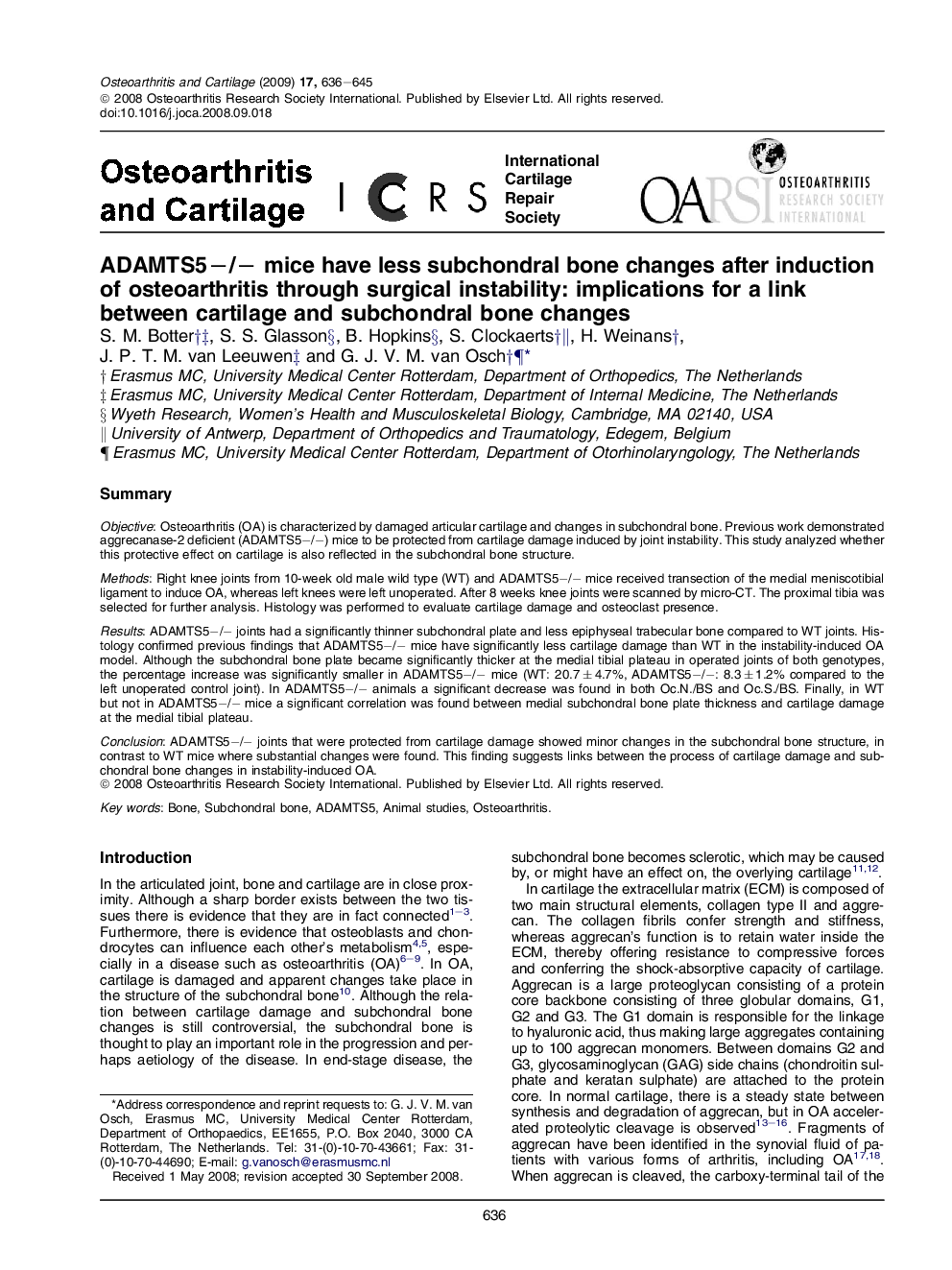| Article ID | Journal | Published Year | Pages | File Type |
|---|---|---|---|---|
| 3381191 | Osteoarthritis and Cartilage | 2009 | 10 Pages |
SummaryObjectiveOsteoarthritis (OA) is characterized by damaged articular cartilage and changes in subchondral bone. Previous work demonstrated aggrecanase-2 deficient (ADAMTS5−/−) mice to be protected from cartilage damage induced by joint instability. This study analyzed whether this protective effect on cartilage is also reflected in the subchondral bone structure.MethodsRight knee joints from 10-week old male wild type (WT) and ADAMTS5−/− mice received transection of the medial meniscotibial ligament to induce OA, whereas left knees were left unoperated. After 8 weeks knee joints were scanned by micro-CT. The proximal tibia was selected for further analysis. Histology was performed to evaluate cartilage damage and osteoclast presence.ResultsADAMTS5−/− joints had a significantly thinner subchondral plate and less epiphyseal trabecular bone compared to WT joints. Histology confirmed previous findings that ADAMTS5−/− mice have significantly less cartilage damage than WT in the instability-induced OA model. Although the subchondral bone plate became significantly thicker at the medial tibial plateau in operated joints of both genotypes, the percentage increase was significantly smaller in ADAMTS5−/− mice (WT: 20.7 ± 4.7%, ADAMTS5−/−: 8.3 ± 1.2% compared to the left unoperated control joint). In ADAMTS5−/− animals a significant decrease was found in both Oc.N./BS and Oc.S./BS. Finally, in WT but not in ADAMTS5−/− mice a significant correlation was found between medial subchondral bone plate thickness and cartilage damage at the medial tibial plateau.ConclusionADAMTS5−/− joints that were protected from cartilage damage showed minor changes in the subchondral bone structure, in contrast to WT mice where substantial changes were found. This finding suggests links between the process of cartilage damage and subchondral bone changes in instability-induced OA.
